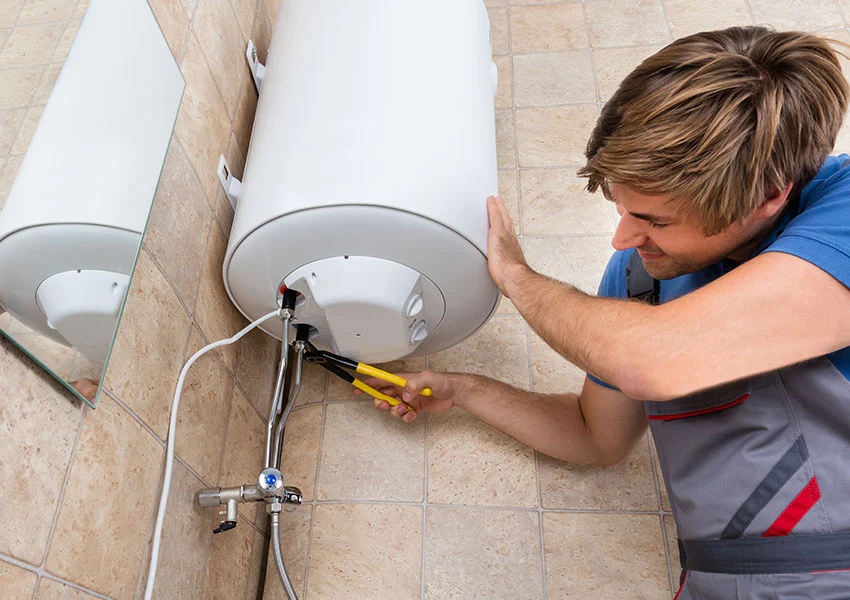What are your insights and beliefs about How to Maintain Your Water Heater & Prolong its Life?

Warm water is essential for daily comfort, whether it's for a rejuvenating shower or cleaning dishes. To guarantee your warm water system runs efficiently and lasts longer, normal upkeep is key. This short article supplies practical ideas and understandings on just how to preserve your home's warm water system to avoid disruptions and expensive repairs.
Introduction
Maintaining your home's hot water system might appear overwhelming, but with a few easy actions, you can guarantee it operates smoothly for years to come. This overview covers whatever from understanding your hot water system to DIY maintenance suggestions and understanding when to contact expert assistance.
Value of Maintaining Your Hot Water System
Routine upkeep not just prolongs the life expectancy of your hot water system however also ensures it operates efficiently. Overlooking maintenance can lead to reduced efficiency, greater power expenses, and even premature failing of the system.
Indicators Your Warm Water System Requirements Upkeep
Recognizing when your warm water system needs attention can protect against major concerns. Watch out for signs such as irregular water temperature, strange sounds from the heating unit, or rusty water.
Purging the Water Heater
Flushing your water heater removes debris accumulation, enhancing effectiveness and lengthening its life.
Monitoring and Replacing Anode Rods
Anode poles avoid corrosion inside the container. Checking and replacing them when broken is crucial.
Facility Problems Requiring Specialist Aid
Instances consist of major leakages, electric issues, or if your water heater is regularly underperforming.
Regular Specialist Maintenance Conveniences
Specialist upkeep can consist of complete evaluations, tune-ups, and ensuring conformity with safety and security requirements.
Evaluating and Changing Temperature Level Settings
Readjusting the temperature level setups makes sure optimal efficiency and safety.
DIY Tips for Upkeep
You can do numerous upkeep jobs on your own to keep your warm water system in top condition.
Checking for Leakages
On a regular basis inspect pipes and links for leaks, as these can cause water damages and higher bills.
Recognizing Your Warm Water System
Prior to diving into upkeep tasks, it's practical to understand the basic elements of your warm water system. Typically, this includes the hot water heater itself, pipelines, anode rods, and temperature controls.
Month-to-month Maintenance Tasks
Routine month-to-month checks can assist capture minor issues before they escalate.
Checking Pressure Relief Valves
Checking the stress safety valve ensures it operates correctly and prevents extreme pressure accumulation.
Protecting Pipelines
Shielding warm water pipelines lowers heat loss and can save energy.
When to Call an Expert
While DIY upkeep is useful, some problems call for specialist proficiency.
Conclusion
Routine maintenance of your home's hot water system is crucial for efficiency, longevity, and cost savings. By complying with these ideas and recognizing when to look for professional help, you can guarantee a reputable supply of hot water without unexpected disruptions.
How to Maintain an Instant Hot Water Heater
Before tinkering with your hot water heater, make sure that it’s not powered on. You also have to turn off the main circuit breaker and shut off the main gas line to prevent accidents. Also turn off the water valves connected to your unit to prevent water from flowing into and out of the appliance. 2. When you’re done, you have to detach the purge valves’ caps. These look like the letter “T” and are situated on either side of the water valves. Doing so will release any pressure that has accumulated inside the valves while at the same time avoid hot water from shooting out and burning your skin. 3. When the purge valves’ caps are removed, you have to connect your hosing lines to the valves. Your unit should have come with three hoses but if it didn’t, you can purchase these things from any hardware or home repair shops. You can also get them from retail stores that sell water heating systems. Read the user’s manual and follow it to complete this task properly. When the hosing lines are connected, open the purge port’s valves. 4. You should never use harsh chemical cleaners or solutions when cleaning your unit. Make use of white vinegar instead. It should be undiluted and you’ll probably use about 2 gallons. 5. Now flush your water heater. This task should probably take about 40 minutes. We can’t give you specific directions for this because the procedure is carried out depending on the type, model and brand of your heater. With that being said, refer to the user’s manual. 6. When you’re done draining the unit, you have to turn off the purge port valves again. Remove the hosing lines that you earlier installed on each of the water valves. Put the valve caps (purge port) back in their respective places and be very careful so as not to damage the rubber discs that are found inside these caps. 7. Now that everything’s back in place, check your user’s manual again to find out how to reactivate your water heating system. 8. Once it is working, turn one of your hot water faucets on just to let air pass through the heater’s water supply pipes. Leave the tap on until water flows smoothly out of it. https://www.orrplumbing.com/blog/2014/september/how-to-maintain-an-instant-hot-water-heater/

I was made aware of that editorial on Water Heater Maintenance Tips You Can't Afford to Forget through a buddy on a different web address. Enjoyed our write-up? Please quickly share it. Let another person locate it. I treasure reading our article about Water Heater Maintenance Tips You Can't Afford to Forget.
Booking Page